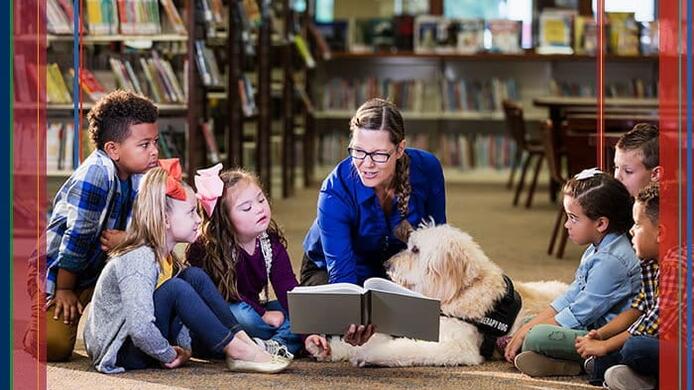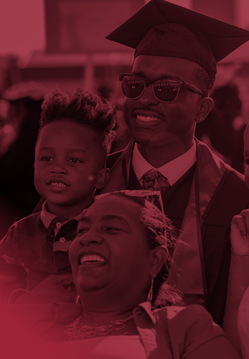Explore our resources for teaching and education degrees and learn about career options that fit your future.

The field of special education has undergone many transformations in the past 30 years. Historically, students with disabilities were underserved by public schools and segregated from general education peers. Disability rights activists successfully fought for laws to address the inequities and opportunity gap between special education and mainstream students.
Today, many schools are restructuring their programs and moving toward an inclusive classroom model, wherein general education and special education educators co-teach all students in the same class. Join us as we explore several evidence-based strategies and practices for creating an inclusive classroom environment and managing student behavior.
5 Ways Educators Can Create an Inclusive Learning Environment
There are many steps you can take to make sure your classroom is welcoming and supportive of all students. Learn from veteran teacher trainers Dr. Anne Spillane, associate dean of special education and professor at UMass Global, and Rick Dahlgren, president and CEO of Time to Teach, as they share five actionable ways teachers can be more inclusive.
1. Craft Your Curriculum Using UDL
One of the first steps to ensuring your classroom meets the needs of all students is to plan your lessons using the principles of Universal Design for Learning (UDL). Students face a variety of emotional, behavioral, neurological and cultural barriers that can impact their ability to fully engage in class.
According to Dr. Spillane, incorporating UDL principles benefits all learners, not just those with disabilities. She explains,
When students can truly come as they are and feel supported, they are able to fully participate in their community. This leads to increased understanding, tolerance, empathy and cooperation skills.
UDL helps guide teachers who may need direction when it comes to integrating accommodations and resources for diverse learning styles and abilities into the curriculum.
2. Stay Calm and Model Appropriate Reactions
One of the most critical — and challenging — skills for a teacher to master is the art of keeping cool even while being confronted with challenging behavior. As Dahlgren likes to say, “Silence is powerful, and calm is contagious.”
Teachers have significant influence in the lives of their students and play critical roles in their social-emotional development. Dahlgren explains that in his experience, kids don’t actually want to be disruptive — a lot of times they simply don’t know how to behave.
“The older kids become, the less educators think they need to teach behaviors, but that’s not true. You need to model constantly because they are always learning from you and your reactions.” He believes that classroom norms and expectations should be taught like any other subject, such as math or reading: with explicit instructions, practice and repetition.
3. Strive for Proactive Classroom Management
Many educators naturally excel at creating and sharing lesson plans but find classroom management to be more challenging. According to a study by EAB, teachers lose an average of 144 minutes per week — or 14.5 days per year — of instructional time due to disruptive behaviors.
Effectively managing these behaviors is a crucial component of nurturing an inclusive classroom environment. Many disruptions can be prevented with proactive strategies that encourage students to self-correct and learn to regulate their emotions. This results in overall less friction, conflict and interruptions during class.
The following strategies can help educators prevent and diffuse disruptive behavior in the classroom:
- Use non-threatening voice and body language
- Avoid power struggles
- Allow students some time away from the source of the behavior
- Minimize the amount of attention the student is receiving for disruptive behaviors
- Give reinforcement or praise for approximations of desired behavior
- If the student is highly escalated, do not attempt logical discussion until after the behavior has subsided and the student is closer to baseline
- Ensure the disruptive student and the other students are safe at all times
4. Understand Each Student’s Needs
Getting to know your students as unique individuals and building personal relationships is essential. Showing genuine interest in kids’ lives and giving them positive reinforcement for the things they are doing well makes a huge difference.
It’s especially important to collaborate closely with special education teachers and providers to make sure you understand each child’s Individualized Education Program (IEP). Most autistic children and students with disabilities in PreK-12 public schools will have an IEP that outlines what they need in order to succeed.
This typically includes special education instruction, support and services such as:
- Assistive technologies
- Additional time on exams and assignments
- Speech and language therapy
- Counseling services
- Occupational therapy
- Physical therapy
- Adapted physical education
- Nursing services
- Behavioral support
- Guidance from an instructional aide or paraprofessional
5. Manage Transitions Between Spaces and Activities
Children thrive when they have a structured routine. This is especially true of some students with disabilities, who may become overwhelmed in unfamiliar places and situations. Many teachers note students tend to act out when moving between physical spaces — walking from the classroom to the cafeteria, for example — or when switching to a new activity.
Try implementing the following measures to make transitions more seamless for students:
- Ensure students know expectations for each activity and transition
- Keep transition time precise
- Have a visual or auditory cue for transitions between activities
- Make sure all materials needed for the project are readily available
- Ensure students know what to do when finished with work or while waiting between tasks
- Establish visual cues to ask or wait for assistance
Make a Difference Through Inclusive Teaching
The most universally known role of a teacher is to educate young learners. But this task goes far beyond simply delivering lesson plans and facilitating tests. As an educator, it’s your responsibility to ensure all students feel safe, welcome and empowered when they enter your classroom. This can be accomplished by implementing some of the strategies above to help foster an inclusive learning environment.
Looking for more information on creating an inclusive classroom environment? Explore our library of online Classroom Management/Behavior professional development courses for educators. Plus check out our free on-demand webinar, "Managing Disruptive Behaviors: The Key Component of An Inclusive Classroom."








